All the above elements can, and do, exist in cut velvet on a sheer silk chiffon base.
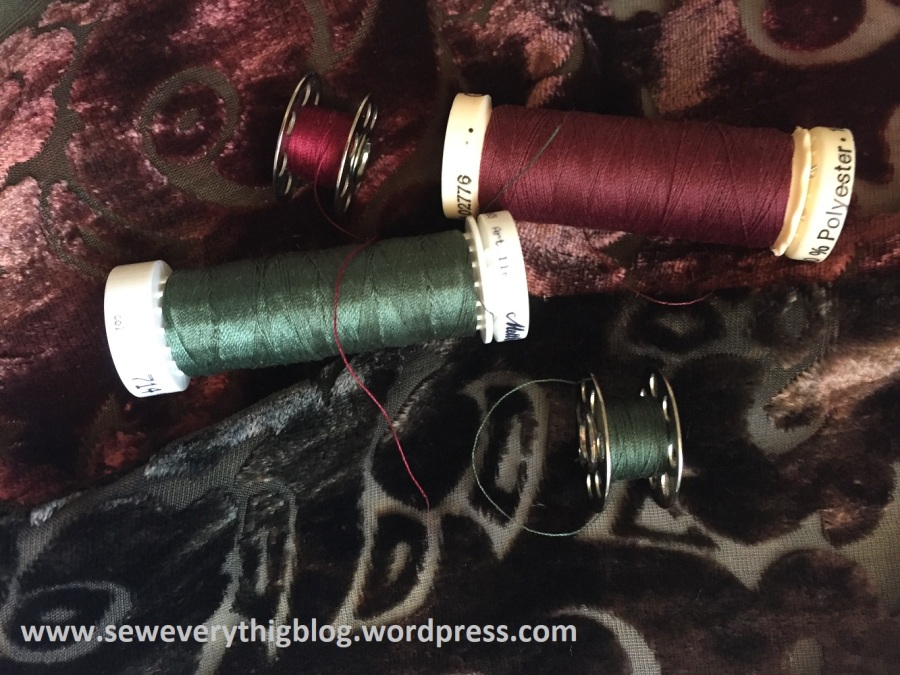
In the past, I’ve gifted a couple of friends with lengths of similar lightweight cut velvet. I want to extend my apologies to them. Also, years ago I outsourced my daughter #2’s prom dress to my friend Peggy who is the best custom dressmaker ever; along with the pattern, I delivered a sheer cut velvet for the dress. Peggy, where are you? I want to apologize in person. By the way, you did a spectacular job!!
Recently, I got to work with this spoiled b—- of a fabric. But it redeems itself in the end – whatever you make with cut velvet, it will be beautiful. Because the fabric is the star. You just need to be mindful of a few things.
Pattern: Yes, again…..
Choosing a pattern with an easy fit and minimum seams is essential. Plus, I look for linear rather than curved seams.
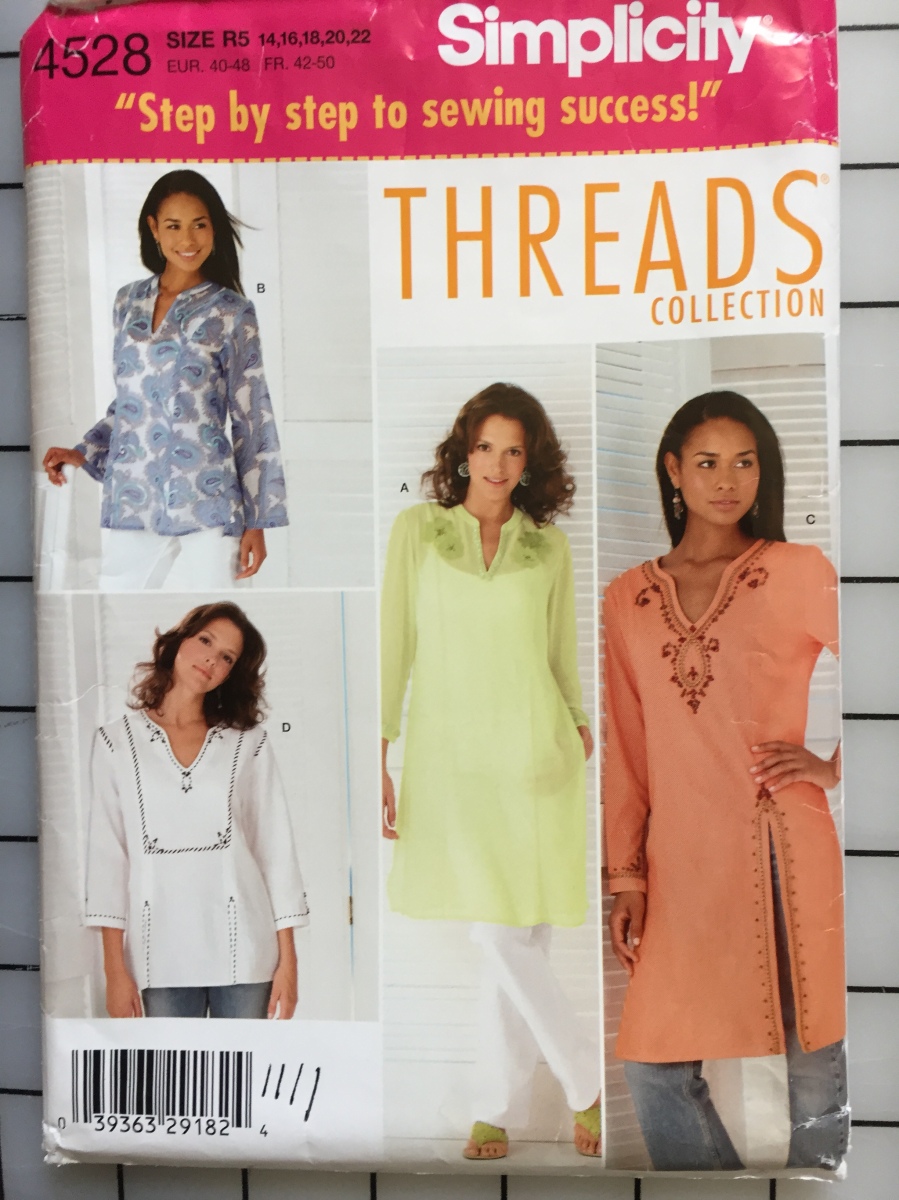
I chose the oft-repeated Simplicity 4528 View B, which is loose enough and has linear enough seams to make it suitable for this light weight cut velvet. However, I don’t look forward to dealing with the collar and neckline. Maybe I’ll change the neckline treatment to a plain bias facing. We’ll see… I live in the South and the Scarlett O’Hara optimism syndrome is rampant around here.
Cutting:


a) Be mindful that the nap runs down! b) Use paper underneath for all sheer, slippery fabric, as recommended by professionals — and I used tons of pins and weights, together. If the cut pile was on a thicker fabric, like satin, I would still use paper underneath. c) I cut it out folded, with wrong sides together. It doesn’t matter, since either way, the uneven piled surface will affect the handling. You just cannot put a paper pattern nice and flat on the fabric, even on the flat wrong side. d) I found that smaller snips of the scissors made the cutting a tad smoother. I want to reveal here that I prefer scissors to a rotary cutter. So there we have it.
Sewing:
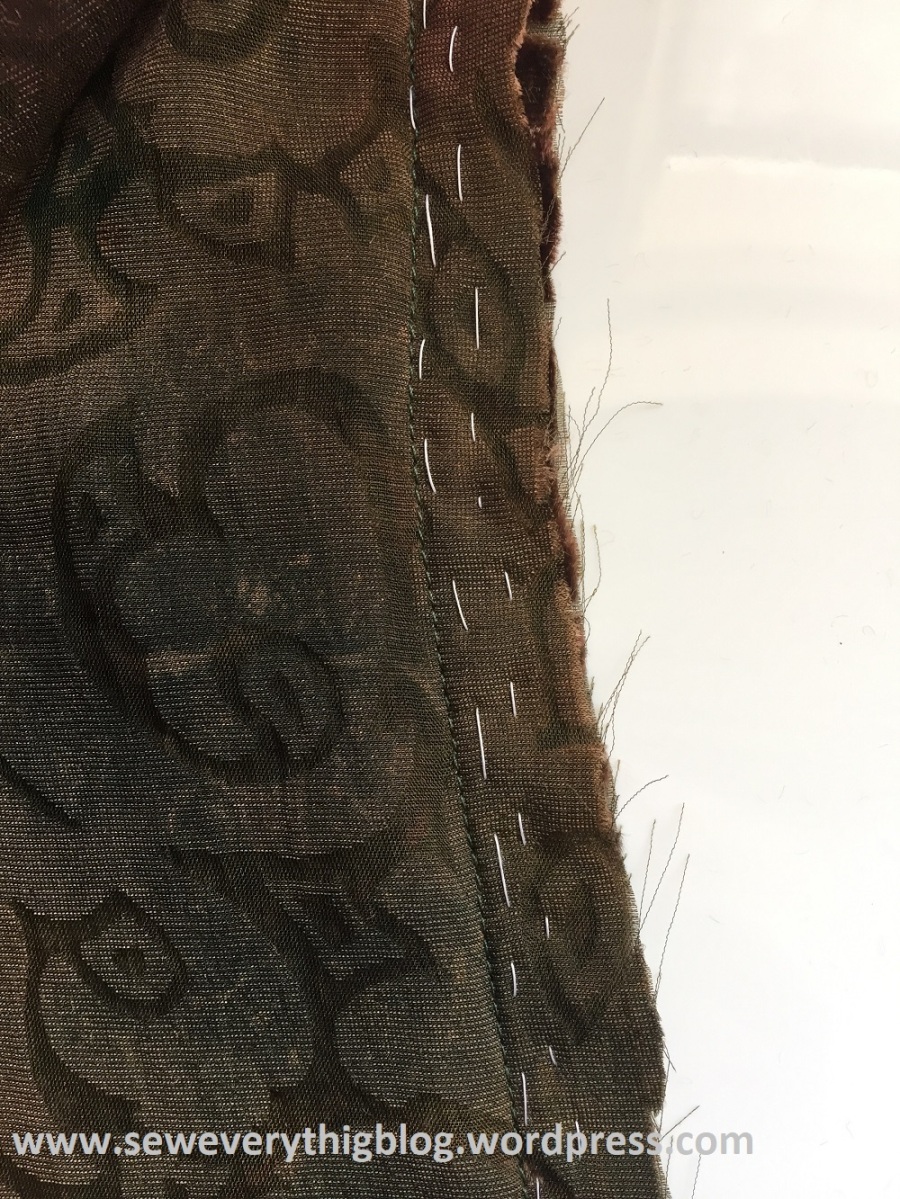
As in all velvet, extensive hand basting is highly recommended. With this particular piece, I did what’s called “double basting” to avoid bottom layer creep — in the length as well as in the seam allowance. I pulled up this information in Claire Shaffer’s, Fabric Sewing Guide. It suggests double basting but I did not see a description of it. Pictured above is what I understand double basting to be. Is it two basting lines, running parallel? Or is it a second basting stitch running on top of the first one? Well, it somewhat worked. Also, I used a walking foot to sew the seams. Claire recommends holding the fabric taut on both sides of the needle/presser foot.
Seam finishing:

Once sewn, I chose to leave the seams well enough alone. The edges are not shedding, and not raveling. Serge-finishing or adding any kind of thread will add just that – more thread. I steam pressed the seams open.
Pressing:
Steam only! No touching, please. Hold the iron on top of area to be “pressed” and tap on it by hand. Er, remove iron first……
The hemming process and the neckline will have to be thought through, and I’m not there yet. Like my hero Scarlett, I’ll think about those tomorrow…..
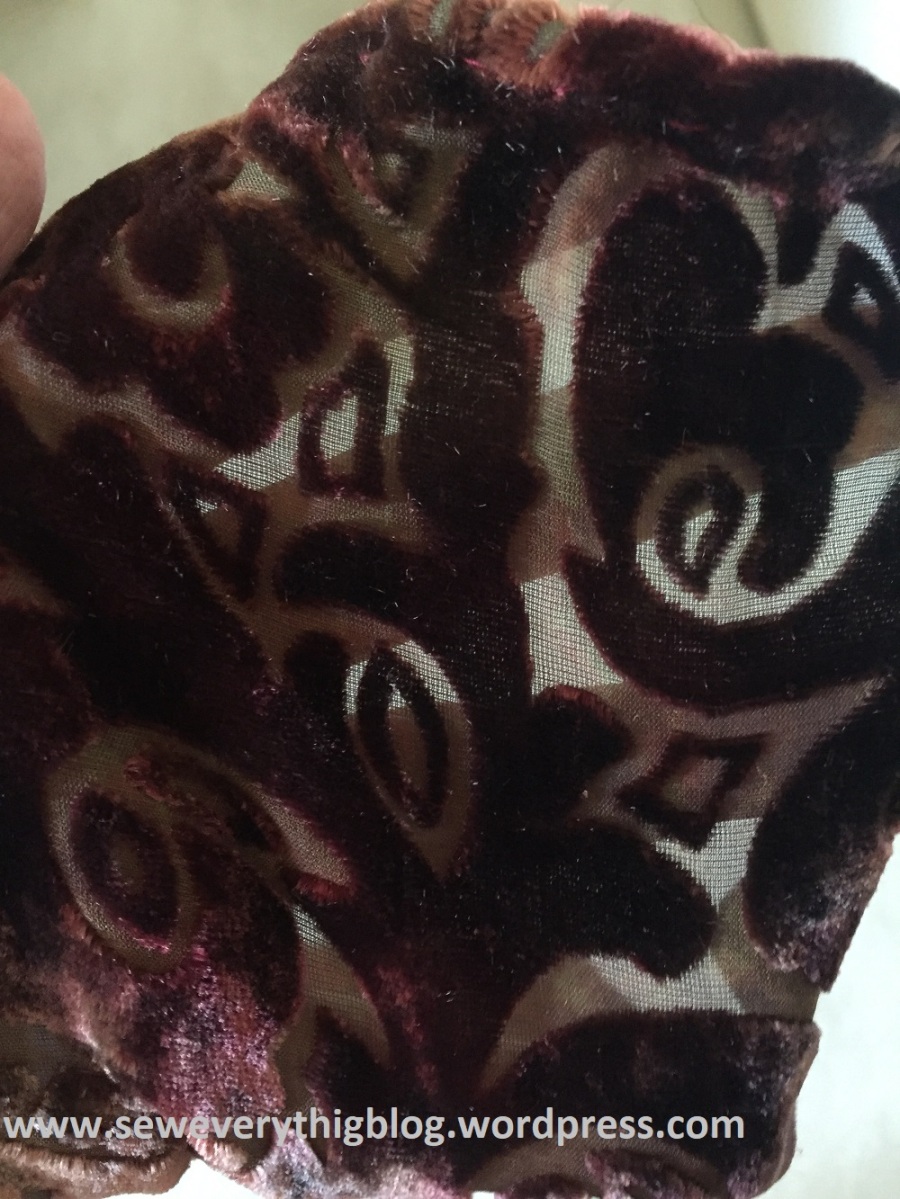
After all is said and done, I adore this fabric for its looks! It is thin enough to wear through the extended Texas summers but the color gradient is so autumnal.
Have you sewn with this kind of fabric? If you have, add some tips in the comment section — pretty please.
Samina
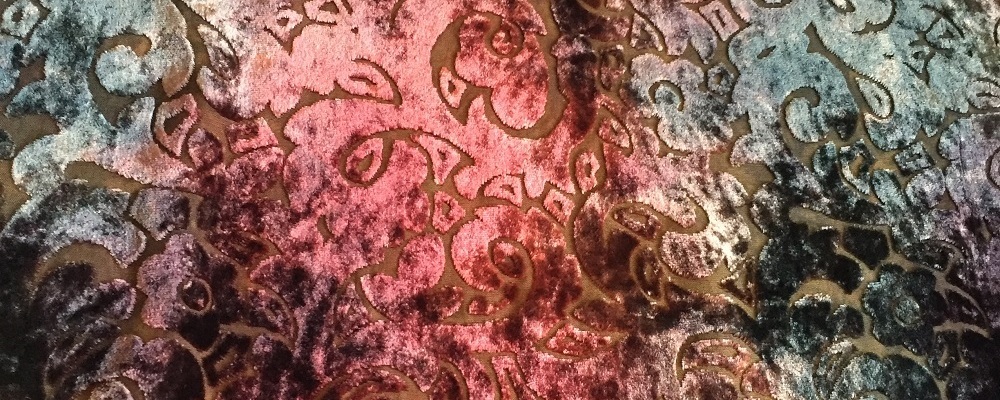
Mmm turning bright green with envy here, it looks beautiful. I haven’t used a cut velvet, but have used silk velvet a few times. Most of what you say about handling strikes a cord. I tend to cut a double pattern and cut out in one layer. My electric shears need new blades, but when they’re right they are the bees knees for floaty, slippery fabric. Probably beacause they make many small cuts. Try to get a decent swipe with the shears and the fabric pushes off the line. I hand overcast my seams to finish, labour intensive but ‘light’, and also hand hemmed. Thats not as hard as, for example, hand hemming satin, because the thread you pick up on the right side can be buried in the pile. I used slip stitch and avoided pulling it tight.
LikeLike
Ooooh. Didn’t think of cutting in one layer. I’ll remember that for next time I sew with this fabric – if ever. Thank you for that , and all the other tips. I am also hand hemming and hand overcasting where needed.
LikeLike
I was gifted a gorgeous piece of this recently. I’m still deciding what to do with it but will be bearing this post in mind as I choose 😃.
LikeLiked by 1 person
Kim, I’m sure whatever you make will be beautiful. I’ll be watching out for it. 🙂
LikeLike
A special place in hell for that stuff. There’s often a fiber in the substraight that is pokey and sharp as a cut seam.
I made a shirt of it and I tossed it, after I scavenged pieces for a slouchy cap (lined and interlined with flannel, thank you). And I gave that hat away.
It’s so pretty, though. It really is. I hope your results are better than mine.
LikeLiked by 1 person
I think it’s turning out good. Only thing left to do is the hem and sleeve hem. I wonder what other wonders there are in fabric hell. Lol.
LikeLike
Another approach to keeping the two layers of plush fabric from “traveling” at different speeds is to insert pins (or basting stitches) both parallel to the seam line and at right angles to the seam line, about 5/8 ” apart. It looks like a line of crosses. You have to pull the pins as you go, never sewing over a pin, so the slower your machine goes, the better. It made me long for the old treadle machine in my parent’s basement, which allowed me to control every stitch. A Walking Foot is definitely desirable for plush fabrics, so that both top and bottom fabrics are moving along. (You can probably tell that I have a very old sewing machine.)
LikeLike